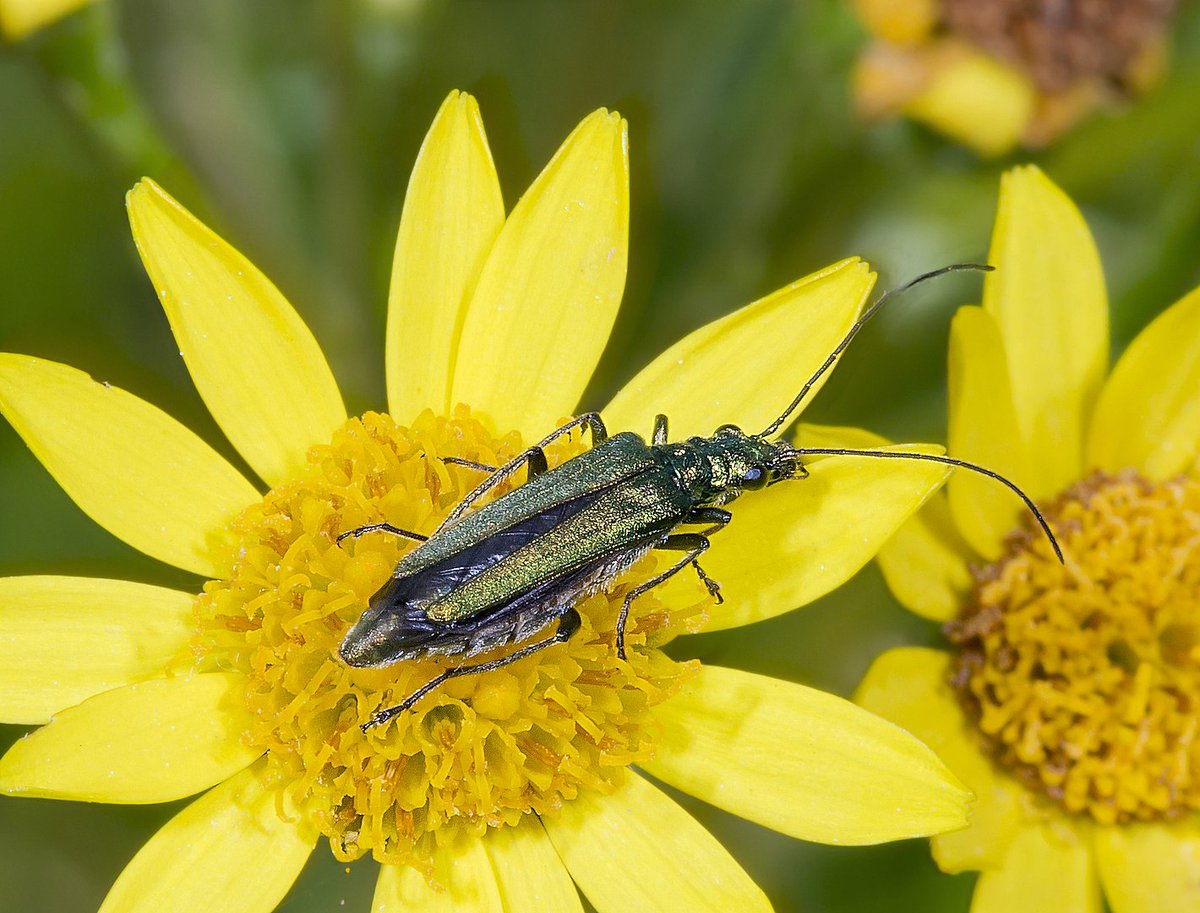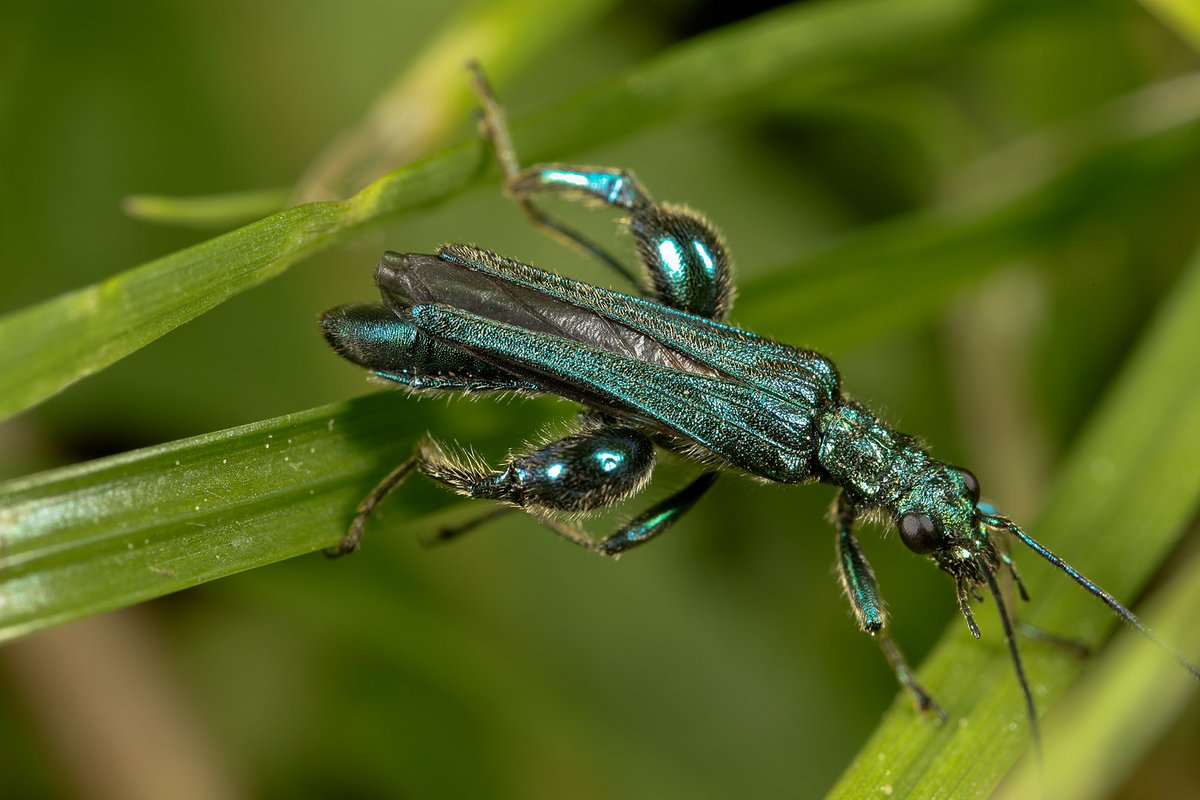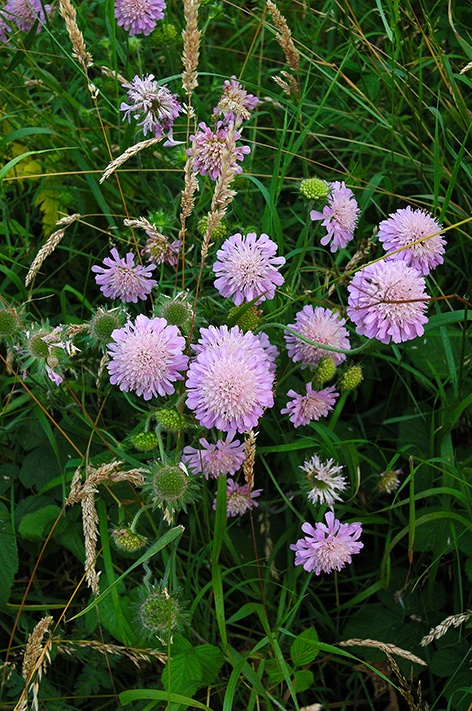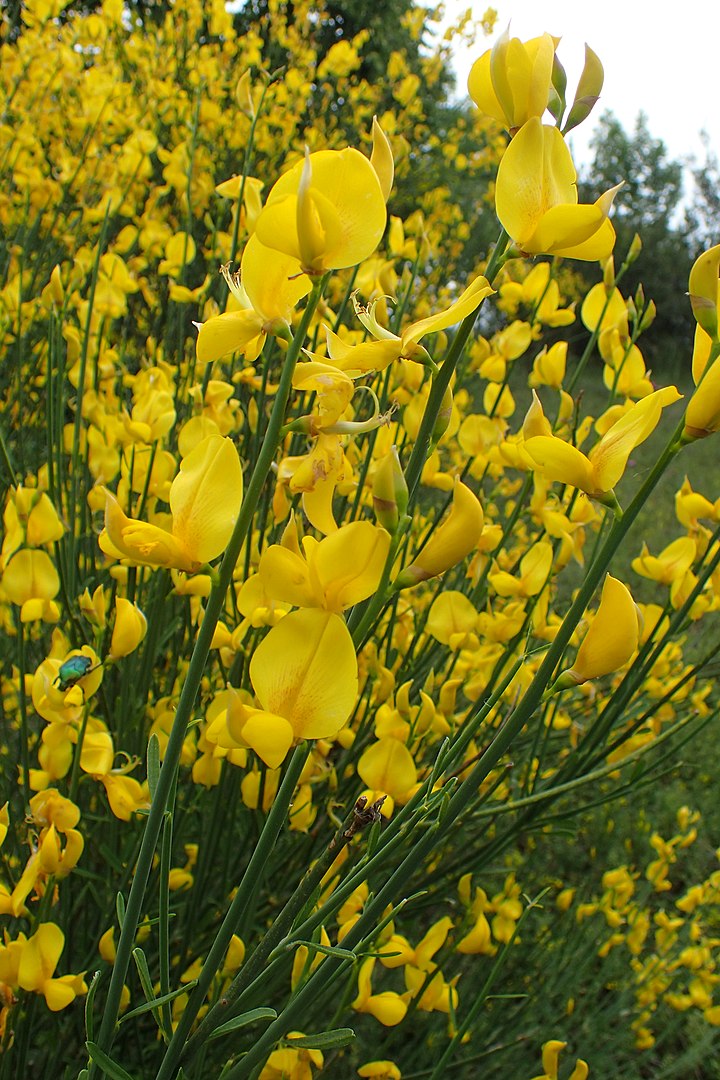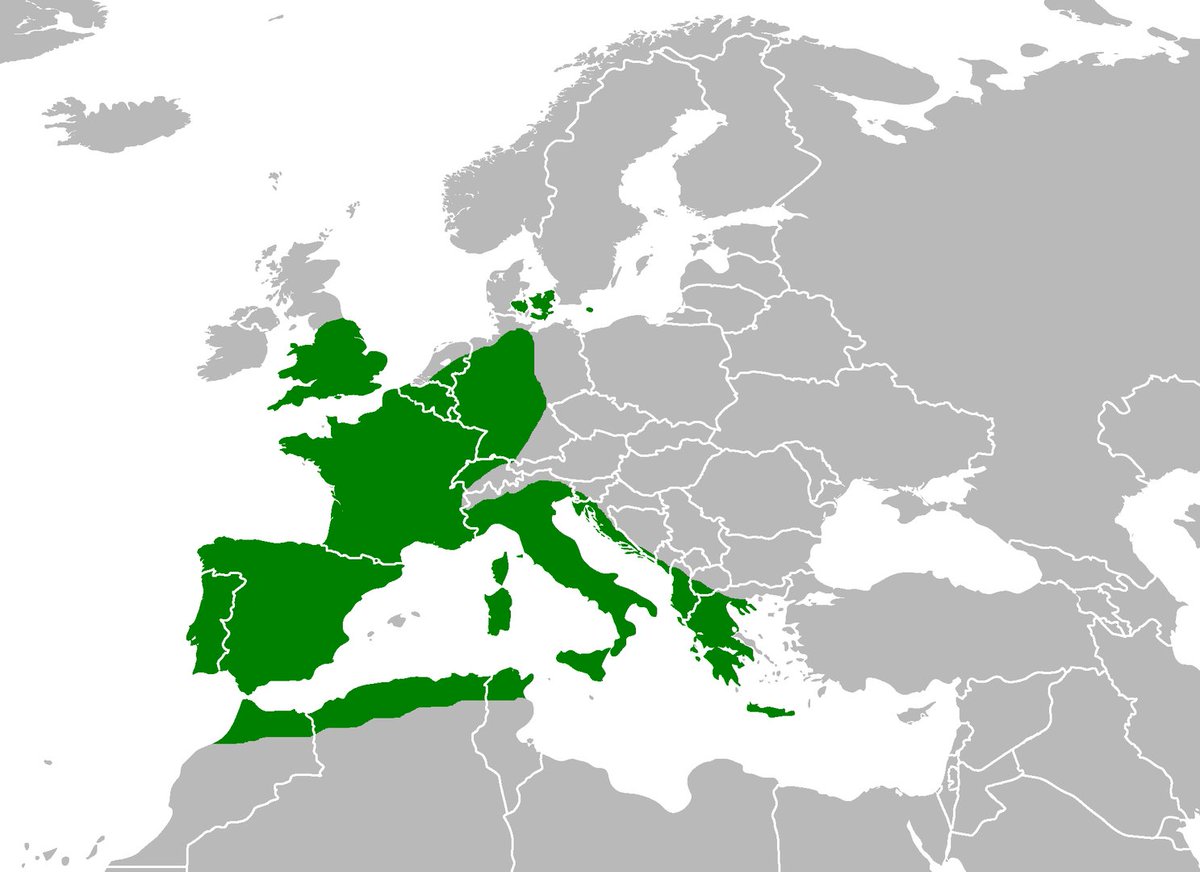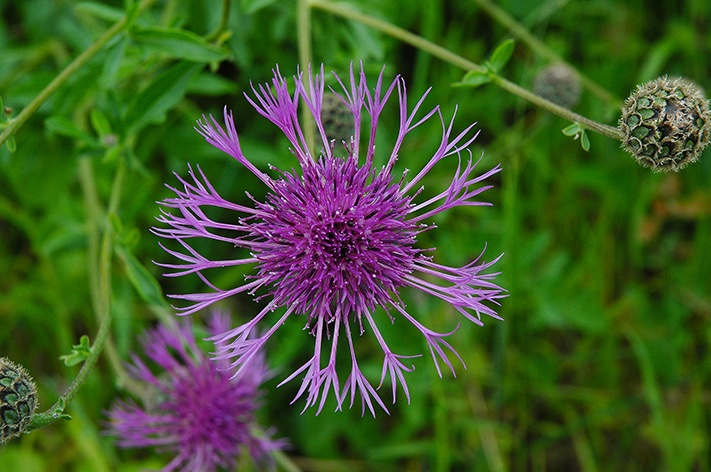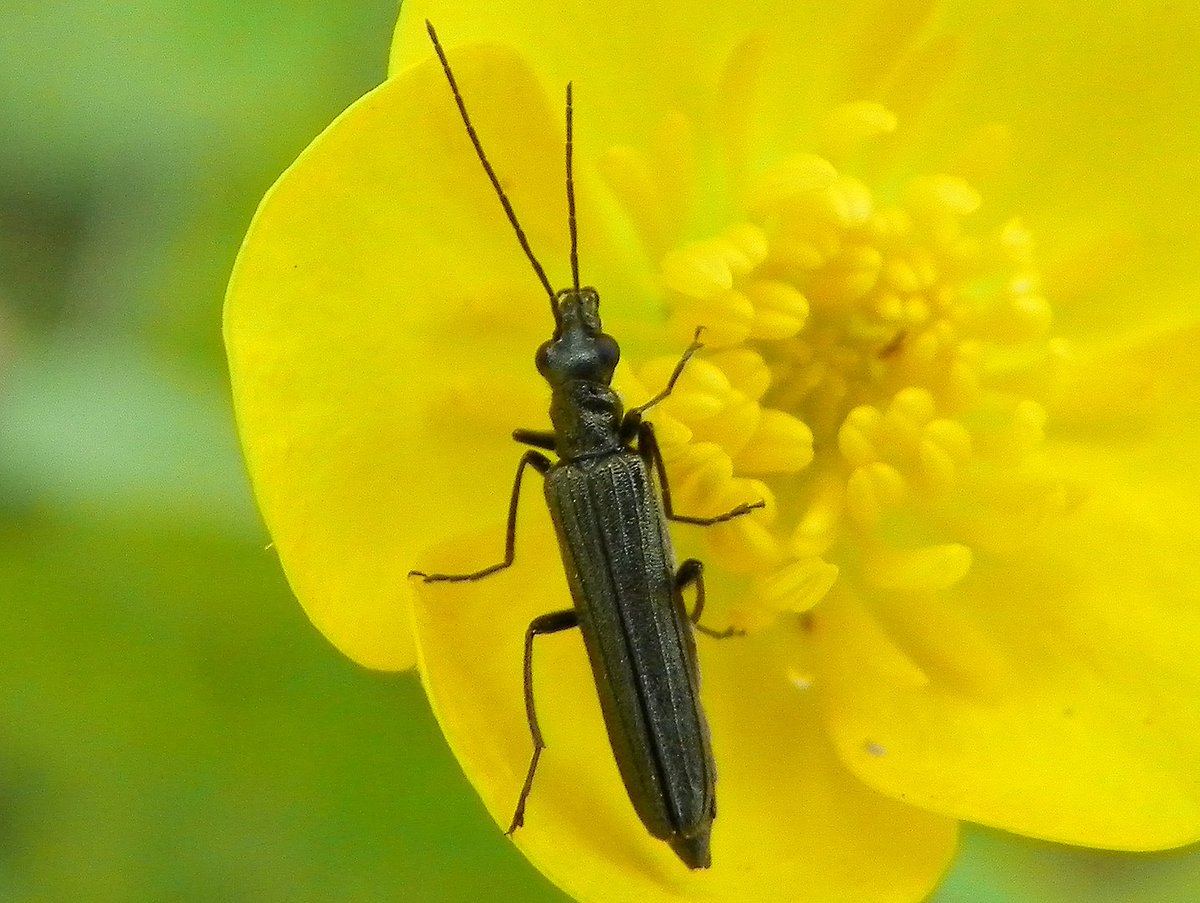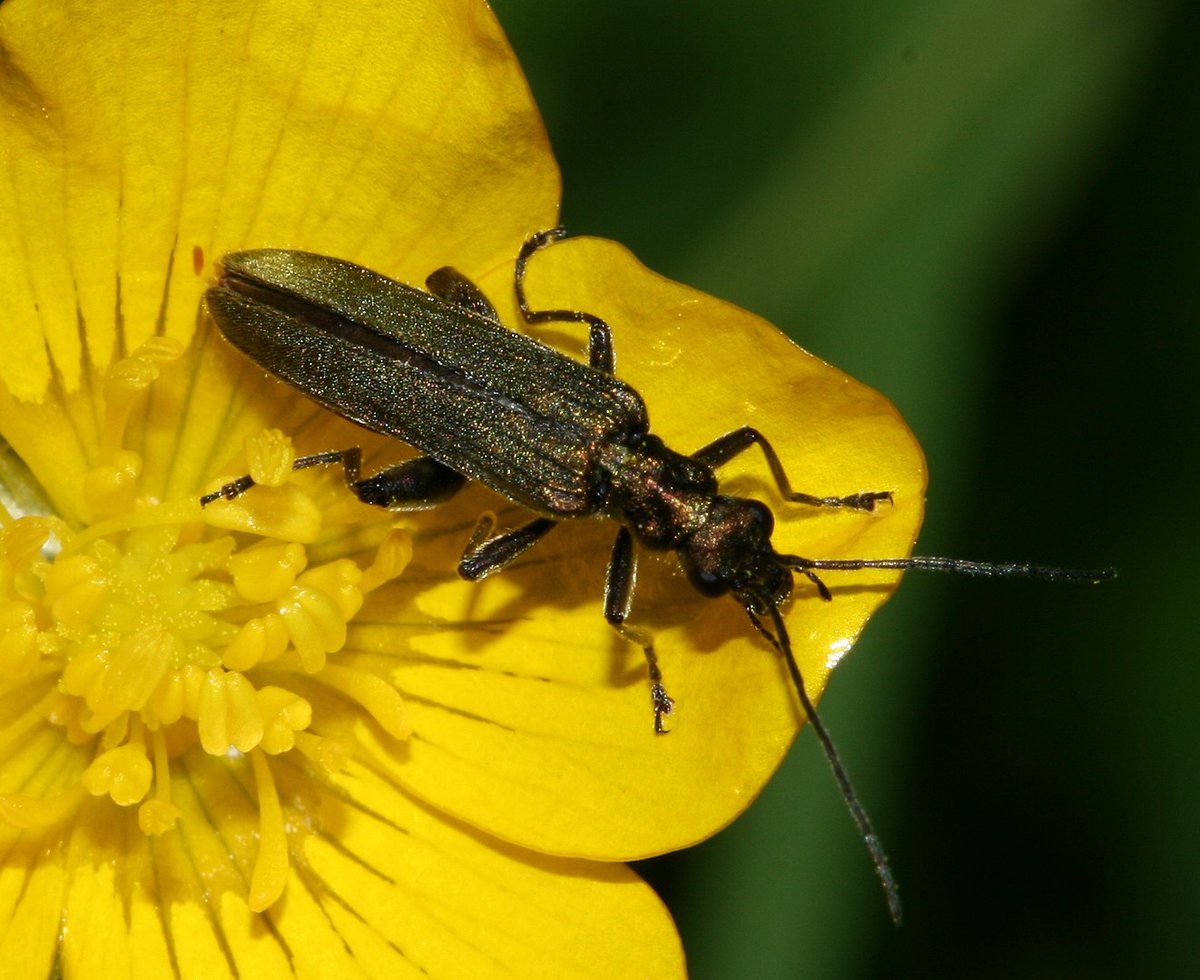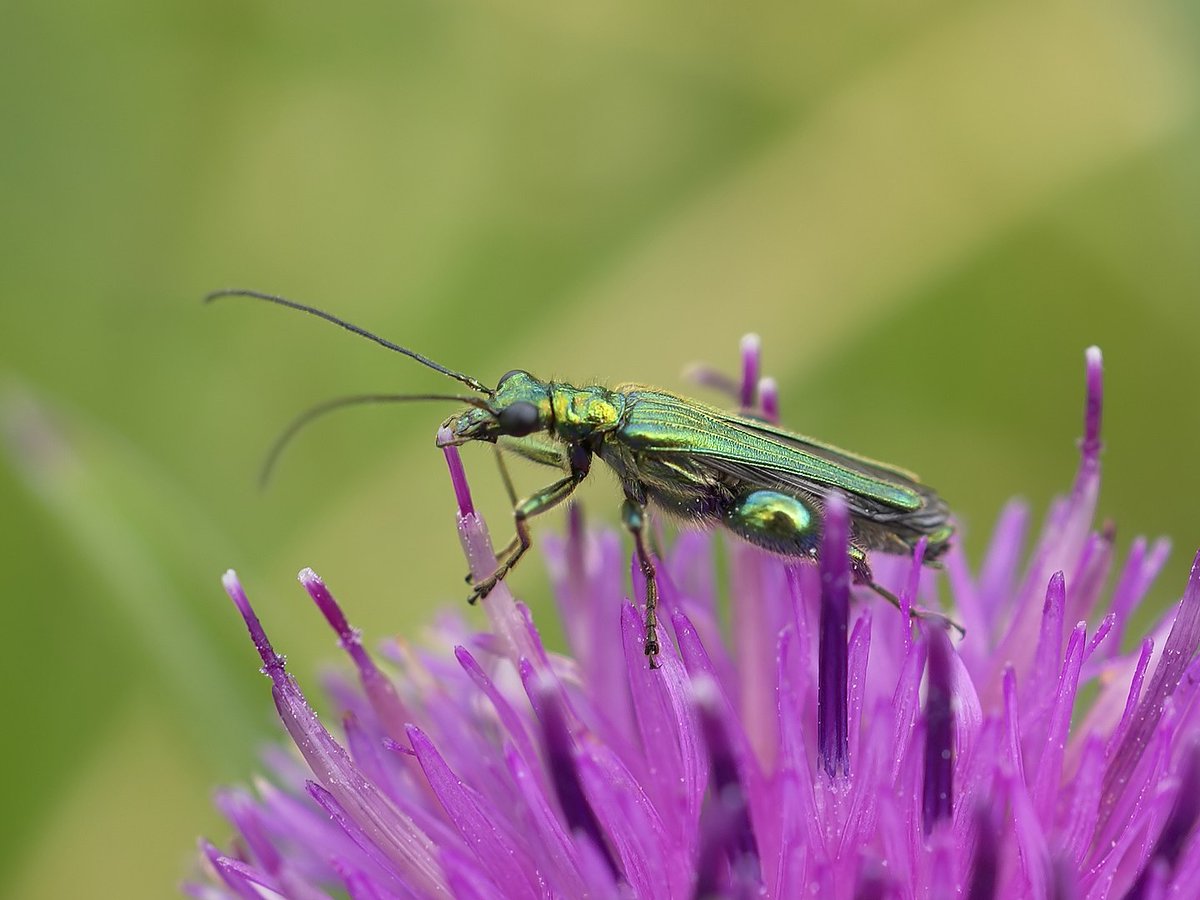1. I have developed an ‘inordinate fondness for beetles’, the Coleoptera, especially but not exclusively the Oedemeridae. It includes Oedemera nobilis (Scopoli, 1763), Swollen-thighed beetle.
O. nobilis fem By Didier Descouens, CC BY-SA 4.0
#NationalInsectWeek @angrybotanists
O. nobilis fem By Didier Descouens, CC BY-SA 4.0
#NationalInsectWeek @angrybotanists
2. It is the male that sports that swollen (or oedematous!) thighs, O. nobilis is bright green, with a viridian sheen; some individuals are cyaneus or violaceous.
Oedemera nobilis By Andy Murray CC BY-SA 2
Oedemera nobilis By Andy Murray CC BY-SA 2
3. O. nobilis is day flying from April to August, feeding on pollen & nectar of Asteraceae, Cyperaceae, Convolvulaceae, Cruciferae, Dipsacaceae, Scrophulariaceae, Poaceae, Papaveraceae, Plantaginaceae, Rosaceae, Rubiaceae &Apiaceae.
Field Scabious, Knautia arvensis
Field Scabious, Knautia arvensis
4. The larvae develop in the dry stems of Spartium and Cirsium.
Spartium junceum, By Krzysztof Ziarnek, Kenraiz - Own work, CC BY-SA 4.0
Spartium junceum, By Krzysztof Ziarnek, Kenraiz - Own work, CC BY-SA 4.0
5. One of three species that can be seen in the UK, O. nobilis has been expanding and consolidating its populations here since 1995.
Map distribution
By Xvazquez - Own work, Public Domain
Map distribution
By Xvazquez - Own work, Public Domain
6. O. lurida (Marsham, 1802) has been recorded on Centaurea scabiosa, Eupatorium cannabinum & Senecio nemorensis, with a mainly southern distribution
Centaurea scabiosa, Greater Knapweed
By Pauk, Oedemera lurida, CC BY-SA 2.0
Centaurea scabiosa, Greater Knapweed
By Pauk, Oedemera lurida, CC BY-SA 2.0
7. The 3rd species, O. virescens, (Linnaeus, 1767) has the most northerly range (Scotland & NE Yorkshire), recorded on Typha, Aconitum napellus, Senecio jacobaea, Helianthus tuberosus.
By S. Rae from Scotland, UK - Oedemera cf. virescens, CC BY 2
By S. Rae from Scotland, UK - Oedemera cf. virescens, CC BY 2

 Read on Twitter
Read on Twitter